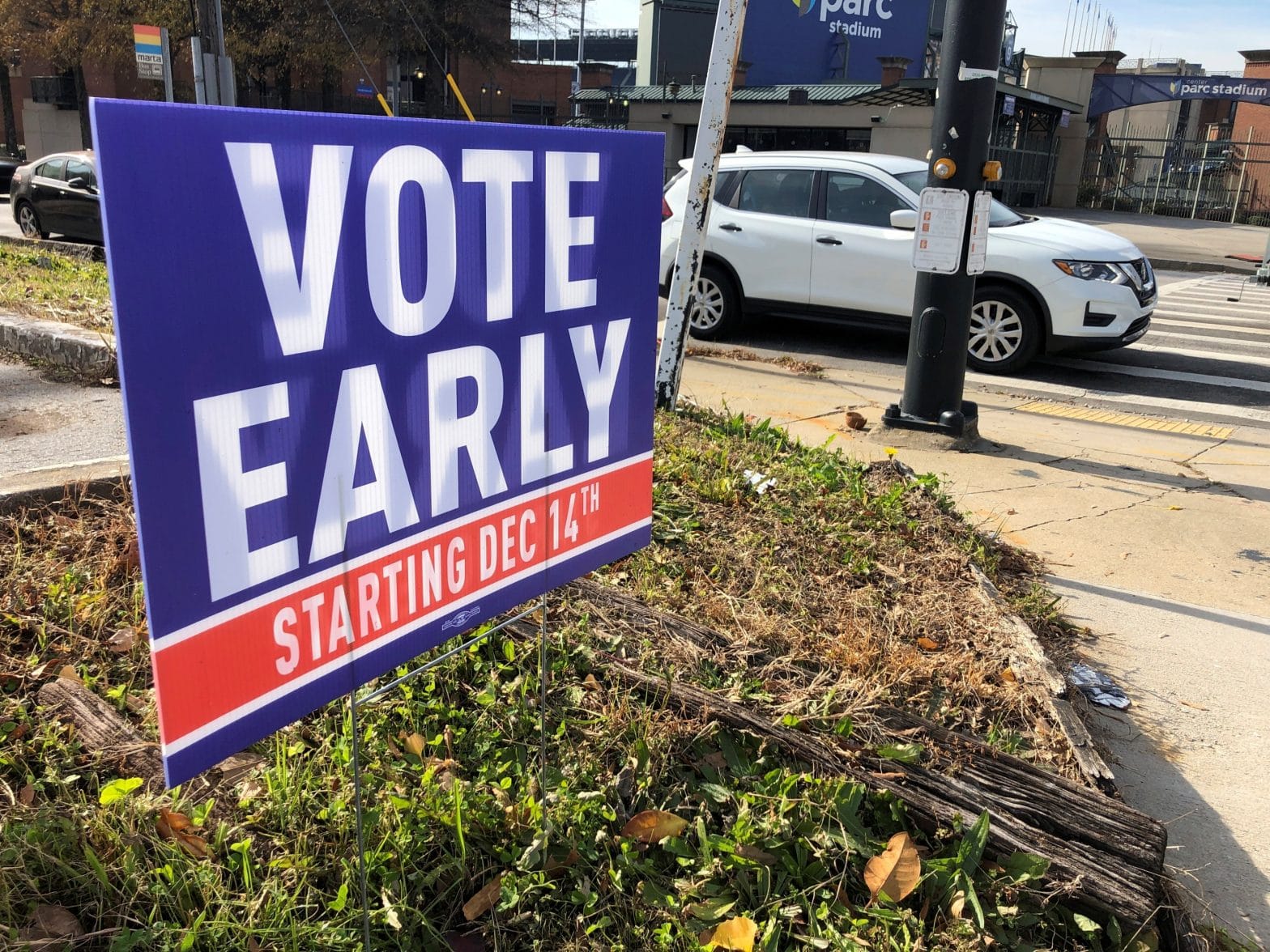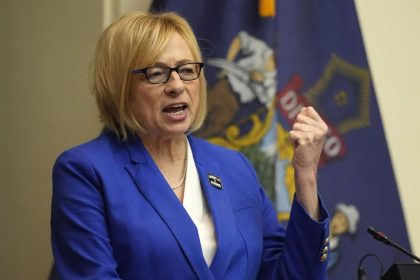GOP Gains in 2022 Midterms Mostly Due to Turnout Advantage

WASHINGTON — While the 2022 midterm elections will long be remembered as the contest in which the Republicans failed to gain decisive control of the U.S. House of Representatives, the GOP nevertheless prevailed when it came to winning the popular vote for Congress last year.
As past analyses have shown, this outcome is largely attributable to 2022 being the tale of two elections — one that took place in a handful of highly competitive districts — The Cook Political Report rated only 36 of the year’s 435 races as toss-ups — and the other in states without any competitive electoral contests.
As a result, there was no national trend that produced a big swing in the composition of the House, and while Republicans gained a slim majority, securing 222 seats to the Democrats’ 213, the edge the GOP gained was exactly the same as the House Democrats held in the 117th Congress.
Currently, it should be noted, the House breakdown is 222-212, with one vacancy, due to the resignation of Democrat David Cicilline, who left Congress in late May to become CEO of the Rhode Island Foundation, the state’s largest private funder of nonprofit organizations.
But in a new analysis of the 2022 election the Pew Research Center has zeroed in on the larger story of the Republicans’ clear victory in the overall popular vote, and its conclusion is the GOP was clearly more victorious overall due to the strength of its voter turnout.
Overall, the research center said in a report released Wednesday, 68% of those who voted in the 2020 presidential election turned out to vote in the 2022 midterms, but former President Donald Trump’s voters turned out at a higher rate in 2022 (71%) than did President Joe Biden’s voters (67%).
Pew’s researchers also found that party loyalty, a hallmark of recent elections, remained strong in last fall’s midterms, with just 6% of those who cast ballots in 2022 saying they crossed party lines or voted for third-party candidates.
Similarly, the research found, the vast majority of those who voted in both 2018 and 2022 had consistent party preferences across the two elections: 95% of those who voted for a Republican candidate in 2018, and 92% of those who voted for a Democrat, voted for a House candidate of the same party four years later.
Democratic 2018 voters were slightly more likely than Republican 2018 voters to defect in 2022, with the net consequences of the party balance flipping 1 or 2 percentage points to the GOP.
According to the Pew Research Center, that is a potentially impactful shift in an environment of very close elections.
But its researchers concluded the far greater driver of the GOP’s performance in 2022 was differential turnout: higher turnout among those supporting Republican candidates than those supporting Democratic candidates.
Shifts in turnout, as opposed to defections, were responsible for most of the changes in vote margins from the 2018 midterms within most subgroups in the population. For example, the Democratic advantage among women dropped from 18 points in 2018 (58% Democratic, 40% Republican) to just 3 points in 2022 (51% and 48%, respectively).
When looking only at women who voted in both elections, there is no net advantage for either party from defections: 6% of those who voted Democratic in 2018 flipped to vote for a Republican candidate in 2022, and a nearly identical share of women who voted Republican in 2018 voted for a Democratic candidate in 2022 (5%).
Virtually all of the decline in the Democratic advantage among women is explained by the fact that the 2022 turnout rate for women who voted Republican in 2018 was 8 points higher than the rate for women who voted Democratic that year (84% vs. 76%).
But as in most aspects of life, the Pew researchers note that there were a few important exceptions to the general rules.
One of these was that more rural voters changed their vote from a Democratic to a Republican candidate between 2018 and 2022 than the reverse.
The Republican margin among this group nearly doubled between 2018 and 2022 (from 21 points to 40 points). Among rural voters, Republican candidates in 2022 held on to 97% of those who voted Republican in 2018, while Democratic candidates held on to a smaller share (91%).
And among White voters with no college degree, Republicans benefited from slightly higher rates of defection from Democratic candidates among those who voted in both elections.
When all was said and done, Republican candidates for the House received roughly 51% of the total vote in 2022 compared with 48% for Democratic candidates. This helped the Republican Party gain a narrow majority in the House. Democrats retained control of the Senate. While Republicans exceeded expectations in a few states — notably New York and Florida — pre-election predictions of a “red wave” failed to materialize.
However, the broad outcome of the elections in much of the country was shaped largely by the underlying political makeup of the 2022 voters and how they differed from the voters of 2020 and 2018.
Midterm voters tend to be older, more educated and more affluent than those who vote just in presidential election years, a pattern apparent in both 2018 and 2022. The two elections also had something else in common: The president’s party suffered more “drop-off” voters than did the opposing party.
People who voted in 2018 who did not turn out in 2022, so-called “drop-off” voters, had favored Democrats in 2018 by about two to one (64% to 33%), the Pew Research Center found.
Likewise, about a third of 2020 voters (32%) did not turn out in 2022. This group voted 53% to 43% for Joe Biden. The absence of these 2020 Biden voters resulted in a worse performance for Democratic candidates in 2022.
The drop-off voters mattered but so, too, did voters who turned out in 2022 but not in earlier elections — and these voters also helped Republican candidates. Those voting in 2022 included 21% who had not voted in 2018. This group supported Republican candidates in 2022 by a margin of 58% to 40%.
This new study is based on surveys of a subset of the 7,041 members of the center’s American Trends Panel following the last four general elections (2016-2022). Voter turnout in each election was verified by a comparison with official records.
Some of the analysis focuses on a subset of 7,041 panelists interviewed post-election in 2022 for whom reliable measures of voter turnout and candidate choice were also available for the 2018 and 2020 elections.
Other key findings from the latest Pew Research Center Analysis of the 2022 Election Index study:
Voters under 30 continued to strongly support the Democratic Party, voting 68% to 31% for Democratic candidates.
Voters under 30 accounted for 10% of the electorate in 2022 — similar to their share of all voters in 2018 (11%), but down from 2020 (14%).
Ideological polarization by party was nearly complete in 2022: Only 1% of self-described conservative Republicans voted for Democratic House candidates and less than 1% of liberal Democrats voted Republican.
Voting in person on Election Day increased sharply in 2022 compared with 2020. More voters reported casting ballots in person on Election Day in both parties, but the share remained much higher among Republican voters (51%) than among Democratic voters (34%).
White voters without college degrees made up a majority (54%) of Republican voters in 2022, compared with 27% of Democratic voters, these voters made up a somewhat greater share of GOP voters in 2020 (58%) and 2018 (57%).
Voters aged 50 and older were a larger share of the total in 2022 (64%) than in any of the past three elections. Seventy percent of Republican voters were 50 or older, as were 57% of Democratic voters.
The Republican advantage among White evangelical Protestants was somewhat larger in 2022 than in the past three elections. Eighty-six percent supported Republican candidates in 2022 and only 12% voted Democratic.
This new Pew Research Center report is based on data collected between Nov. 16 and 27, 2022. A total of 11,377 panelists responded out of 12,402 who were sampled, for a response rate of 92%. The margin of sampling error for the full sample of 11,377 respondents is plus or minus 1.5 percentage points.
Dan can be reached at [email protected] and at https://twitter.com/DanMcCue
























